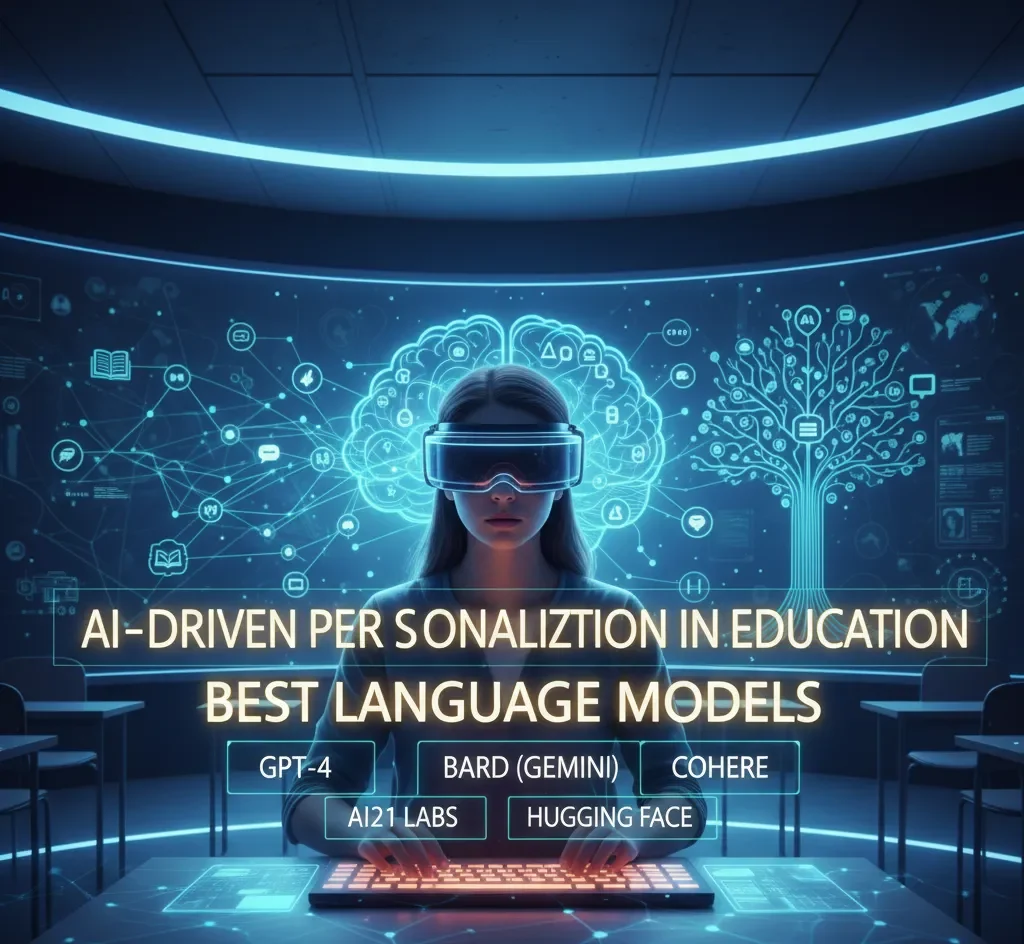1. What is AI-Driven Personalization and Why It’s Changing Education
In today’s digital classrooms, AI-driven personalization & large language models in education are reshaping how students learn and how teachers teach. Schools and universities across the world are adopting AI technologies to create adaptive learning experiences — adjusting content, pacing, and feedback based on each student’s unique needs. With these intelligent systems, lessons can evolve in real time, offering personalized support for every learner.
Large language models (LLMs) — such as those behind chatbot tutors and smart feedback systems — are being integrated not just as tools for writing or student support, but for tutoring, content creation, language assistance and special-needs support. For example, a survey paper on LLMs in education underlines their ability to provide real-time, contextually relevant feedback, adapt to learning styles and generate customized materials.
Why it matters: When education becomes more attuned to where a student is — their knowledge gaps, their pace, their language ability — learning becomes not just more efficient, but also more engaging. Also teachers can spend less time on “one size fits all” content and more time on the human-centred parts of teaching: mentoring, supporting thinking, fostering collaboration and creativity. At the same time, adaptive systems can help bridge learning gaps by meeting students where they are rather than expecting all to move at the same speed.
2. Real-World Uses, Benefits and Emerging Challenges
Real-world uses & benefits
In practice, AI-powered personalization and LLMs are being used in these ways:
- Adaptive content delivery: Systems monitor student responses, pace, mistakes, and then adjust the next content module accordingly (faster for strong topics, slower or more support for weaker areas). ResearchGate
- Tutoring and writing/feedback support: LLMs can act as virtual tutors, helping students with language difficulties, drafting ideas, polishing writing, solving problems, or generating practice questions.
- Automating repetitive or time-intensive tasks: Teachers can offload things like quiz creation, initial feedback, content repurposing, giving them more time for high-impact interactions. arXiv
- Greater engagement & efficiency: Because content is tailored, students may feel more motivated (it feels “just right” for them), which can reduce wasted time and increase retention of learning.
Emerging challenges
Nevertheless, these advancements also present a number of important challenges:
Fairness and bias: AI systems are biased if their training data and system designs are biased. If we don’t pay attention to this, they can further entrench or create biases in decisions (for example, favouring students who had extra resources before). This was flagged among others in the survey on LLMs in education. arXiv
Privacy and access: While customised learning systems often need to collect data about how students learn, their mistakes, their pace, etc., data privacy and ethical use will be paramount. Moreover, if technology ultimately is not equally accessible, we are likely to perpetuate or exacerbate the digital divide.
Academic integrity: If LLMs can generate writing, make homework answers or provide assistance to a high degree, what impact will that have on cheating, plagiarism or simply relying on the AI too heavily for your own learning?
Quality and human-centred teaching: While AI can automate a lot of function and tasks, human teachers can’t be fully re-placed in the roles of mentorship, empathy, critical thinking, values and content expertise. Moreover, getting the AI to produce accurate, current and sound pedagogically content is no small task. The survey paper suggests that limited yields, transparency and technological readiness are genuine barriers. arXiv.
3. Towards a Thoughtful Implementation: What Schools and Universities Should Consider
To make the transition meaningful, institutions should focus on the following three core dimensions:
A. Start with the learner
When implementing adaptive-AI systems, begin by understanding your students: their backgrounds, learning styles, support needs, language challenges, and access to devices/internet. Personalisation only works when the system and teacher design are aligned to those realities.
B. Blend AI with human insight
Large language models and AI-based personalization in education are tools, not a replacement. Use tools to free up teacher time from repetitive tasks (like quiz creation, basic feedback), so the human teacher can focus on what humans do best and be interactive, mentoring students, critical thinking, student growth, and socio-emotional support.
C. Address ethics, access and integrity from day one
- Develop transparent policies regarding data utilization, student privacy, algorithmic fairness, and the monitoring and review of the used AI systems.
- Ensure equitable access is present so students from underserved backgrounds can utilize the tools instead of being excluded.
- Integrate academic integrity safeguards so there are defendable guidelines to establish what is considered permissible, how to responsibly use AI tools in education, and how AI tools can be integrated into assessment design.
- Evaluate the outcomes of your efforts by measuring not only student engagement but also learning outcomes, whether the personalized content of the AI tools is leading to meaningful learning results, and if any students are still not being engaged educationally.
By thoughtfully embracing AI-driven personalization & large language models in education, educators and institutions can open the door to more engaging, efficient and inclusive learning experiences. But the promise will only be fulfilled if implementation is grounded in human values, informed by ethics, and accessible to all.



